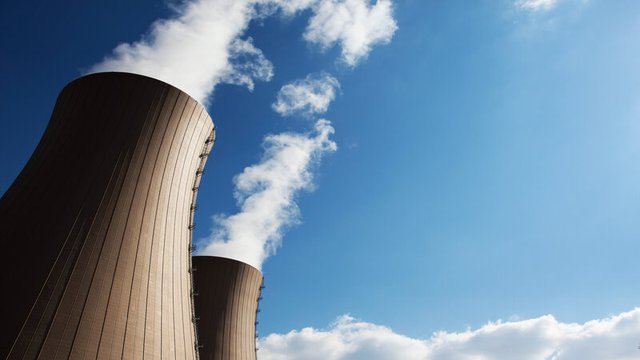

Table of content
Most of our homes, schools, universities, business and other buildings need electricity and energy to power them. We rely on energy for our devices, equipment and all types of machinery. But where does this energy come from? And what is the role of a power plant in the process?
A study published by BloombergNEF said that global electricity demand will grow from 25,000 terawatt-hours (TWh) in 2017 to about 38,700 TWh by 2050. Such an increase means more demand on power plants to produce that electricity. And with a move away from fossil fuels to provide that energy, today there are many types of power plant.
In this post, we’ll look more in detail at the most common types of power plant, something you can become much more familiar with if you study a Mechanical Engineering degree.
What is a power plant?
In simple terms, a power plant, also known as a power station, is an industrial facility used to generate electricity. In order to generate the electriticty, the power plants need an energy source. The industrial revolution saw the boom of power plants using fossil fuel – natural materials such as coal and oil. But as we have become more aware of the impact using the world’s natural resources on the environment, there are now many more types of energy sources used to generate electricty, such as wind, water, nuclear, and the sun.
Most power plants use one or more generators to convert mechanical energy into electrical energy, supplying electricity to the grid to meet the electricity needs of society – that is what we need in our homes, workplaces, and in our daily lives. One exception is solar power plants, which use photovoltaic cells (rather than turbines) to generate electricity.
What types of power plant exist?
Let’s take a closer look at each type of power plant, starting with perhaps the most well-known, and the ones the governments across the world are looking to phase out because of environmental concerns.
- Coal Power Plant: Coal-fired power plants have been the primary source of electricity generation for decades. They burn coal to produce steam that drives a turbine connected to a generator. These plants are known for their high efficiency but cause environmental concerns due to carbon dioxide (CO2) emissions and other pollutants.
- Natural Gas Power Plant: Natural gas power plants use the combustion of natural gas to generate electricity. They are relatively clean and emit less carbon dioxide and other harmful pollutants than coal-fired power plants. They are also more flexible and efficient, making them a popular choice for peak load requirements.
- Petroleum or oil power plants: Oil-fired power plants are less common due to higher costs and environmental concerns. They function like coal-fired power plants but burn petroleum as the primary fuel source. They have the advantage of being able to start and stop quickly, making them suitable for sudden increases in demand.
As scientists have deepened their understanding of how electricity can be generated, there are many other types of power plant. Let’s start with perhaps the most controversial of those:
- Nuclear Power Plants: Nuclear power plants generate electricity through nuclear fission. This is essentially where the nucleus of an atom is split into smaller fragments. The energy that is released is then used to produce steam, which drives a turbine. While it is a low-carbon option, and one that is being developed by governments as an alternative to fossil fuels, there are some safety and waste disposal concerns surrounding the use of nuclear energy.
The other types of power plants are all designed to use renewable sources – good news for solving the climate crisis.
- Solar power plants: Solar power plants use photovoltaic (PV) panels or solar collectors to harness the sun's energy. Photovoltaic panels convert sunlight directly into electricity, while solar collectors use sunlight to heat liquids, which create steam and drive turbines. Solar power plants provide clean energy and, while they are still one of the more costly ways of producing electricity, they are getting cheaper.
- Wind turbines Wind farms use wind turbines to convert the kinetic energy of wind into electricity. When the wind spins the turbine blades, the mechanical energy is converted into electrical energy. Wind energy is abundant, renewable and emits no greenhouse gases during operation. However, its reliability depends on the availability of wind.
- Hydropower plants: Harness the power of running water to generate electricity. Dams or reservoirs store the water released by the turbines to produce the mechanical energy that drives the generators. Hydropower is a proven and reliable renewable energy source, but it can have significant environmental impacts on ecosystems and local communities.
- Biomass plants: Generate electricity by burning organic materials such as wood, agricultural residues or specialty energy crops. During combustion, heat is released, which is then used to create steam and drive turbines. Biomass is a carbon-neutral energy source but concerns about deforestation and sustainable sourcing have been raised in recent years.
- Geothermal power plants: Use the natural heat inside the earth. Hot water or steam is extracted from geothermal reservoirs and used to drive the turbines. The main issue with geothermal energy is that it is geographically limited to areas of the world with enough suitable geothermal resources.
As scientists and engineers develop their understanding of the different sources of energy, not only will the current types of power plants become more efficient and cost effective, but more energy solutions will be found. And if you choose to study at Universidad Europea, with our academic model being based on experiential learning, you’ll take part in work placements and internships and be at the very heart of the advances and development in the sector.